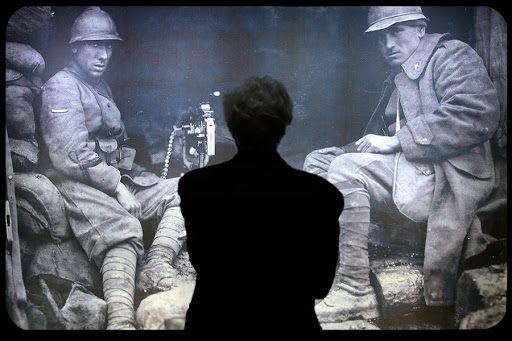Here’s a Christmas ghost story.
Over the past year, I have written a lot about the First World War, and the vigorous tradition of apocalyptic and millenarian ideas that surrounded that conflict, at all social levels. To the best of my knowledge, the Second World War produces little comparable, which is an interesting fact in its own right. There were no angelic visions, few serious claims of crusade.
All of which gives added interest to the overwhelming power of mystical and supernatural themes in popular culture during the 1940s, particularly in film and fiction. Ghosts, spirits, angels and witches were an absolute mainstay of popular culture throughout the war and immediately afterwards, and they were often shown in a favorable or humorous light. It’s a Wonderful Life (1946) features the bumbling Clarence Odbody, Angel 2nd Class. This wave of supernatural films was distinctive, and really was not paralleled before, or for many years afterwards.
On the analogy of other wars and times of natural disaster, it would be surprising if there had not been increasing interest in ideas like omens, spiritualism, dreams, ghost sightings, and communication with the dead. Death was pretty omnipresent during those years of global violence and despair.
Unlike during the First World War, though, these later offerings were explicitly intended to be fictitious, and several were explicitly marketed as comedies. Film-makers had to tread a delicate path, giving people the supernatural themes they obviously craved, while not treading on the religious boundaries laid out in the Hays Code. But the sheer volume of ghosts and supernatural themes does tell us something about the public mood during these years.
Might it also say something about people’s openness to other supernatural claims, from organized churches, during and immediately after the war? Or look at the phenomenal appeal of a spiritual best-seller like Thomas Merton’s The Seven-Storey Mountain from 1948. Or consider the incredible successes of the Billy Graham crusades from 1949 onwards.
Much of the shift in taste reflected the changing nature of the audience during wartime. I recently read Tim Snelson’s new book Phantom Ladies: Hollywood Horror and the Home Front (Rutgers University Press, 2014). As he notes “women started flocking to see horror films in the early 1940s. The departure of the young male audience and the surprise success of the film Cat People convinced studios that there was an untapped female audience for horror movies, and they adjusted their production and marketing strategies accordingly. Phantom Ladies reveals the untold story of how the Hollywood horror film changed dramatically in the early 1940s, including both female heroines and female monsters while incorporating elements of “women’s genres” like the gothic mystery.”
Now, Snelson is not talking about the ghost films per se, but the analogies are obvious. I differ from him a bit in that I see the Ghost Wave as definitely preceding the war itself by a few years, but he undoubtedly makes excellent points.
Some of the best-known offerings in this tradition included The Devil and Daniel Webster (1941), Here Comes Mr. Jordan (1941), I Married a Witch (1942), Heaven Can Wait (1943), Blithe Spirit (1945) and (of course) It’s a Wonderful Life. Often, distinguished or notorious ghosts from earlier eras were made to make a political point about current affairs, most obviously Andrew Jackson in Dalton Trumbo’s The Remarkable Andrew (1942).
Here are some of the contributions, arranged chronologically:
1937 Topper
On Borrowed Time; Topper Takes a Trip
1940 Turnabout; Beyond Tomorrow; The Ghost Breakers
1941 Here Comes Mr. Jordan; The Devil and Daniel Webster; Topper Returns
1942 I Married A Witch; The Horn Blows at Midnight; Cat People; The Remarkable Andrew; Thunder Rock
1943 Heaven Can Wait; A Guy Named Joe
1944 The Canterville Ghost; The Uninvited; It Happened Tomorrow; Curse of the Cat People
1945 Blithe Spirit; The Picture of Dorian Gray; Dead of Night; A Place of One’s Own
1946 Stairway to Heaven; It’s a Wonderful Life; Angel on my Shoulder
1947 Ghost and Mrs. Muir; Nightmare Alley
1948 The Night Has a Thousand Eyes; Portrait of Jennie
I’m open to expanding the list!
But my point remains. Just because they were presented in the form of popular culture, we should not underestimate these productions as critical sources for social and religious history.
Philip Jenkinsis a Distinguished Professor of History at Baylor University and author of The Great and Holy War: How World War I Became a Religious Crusade.

